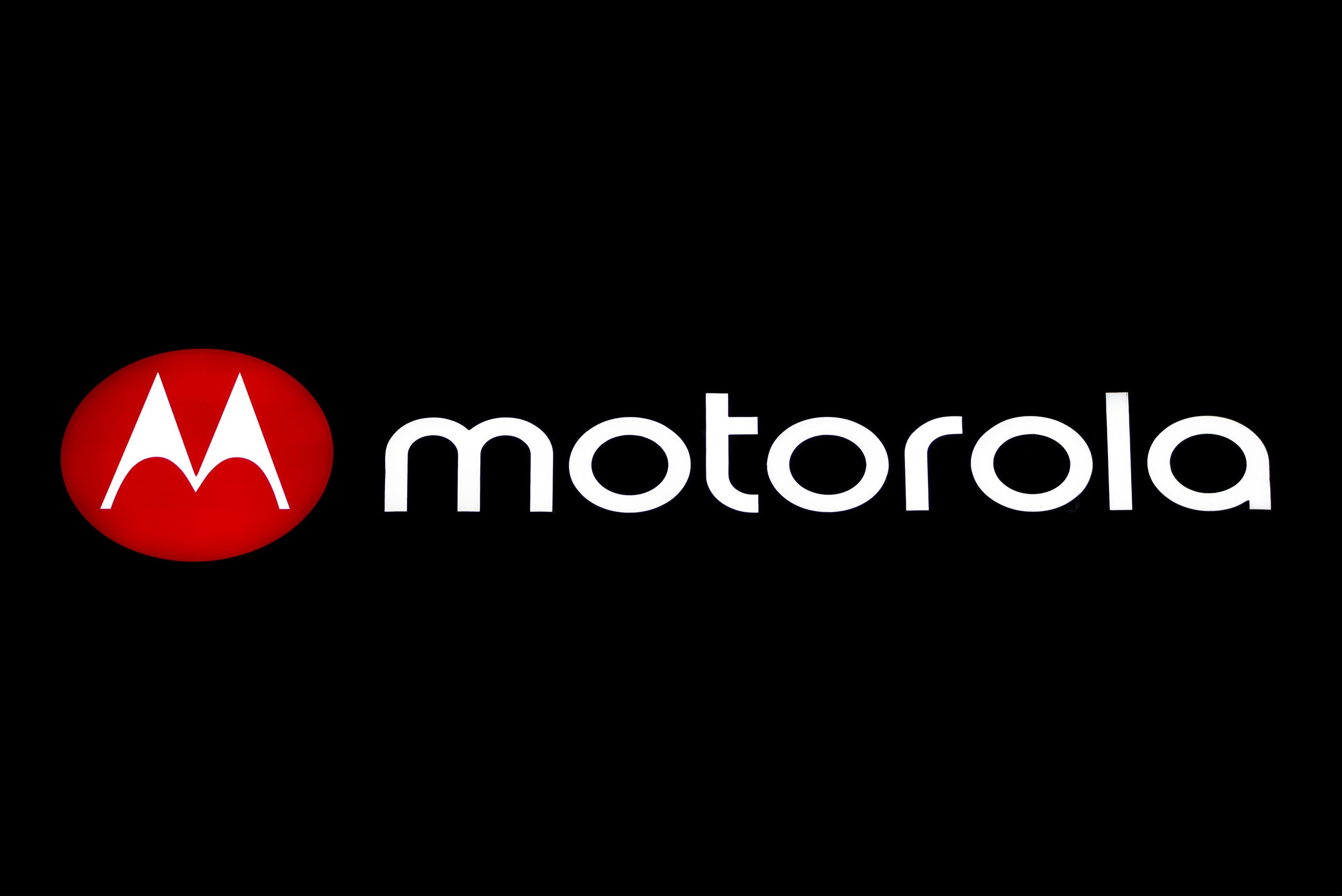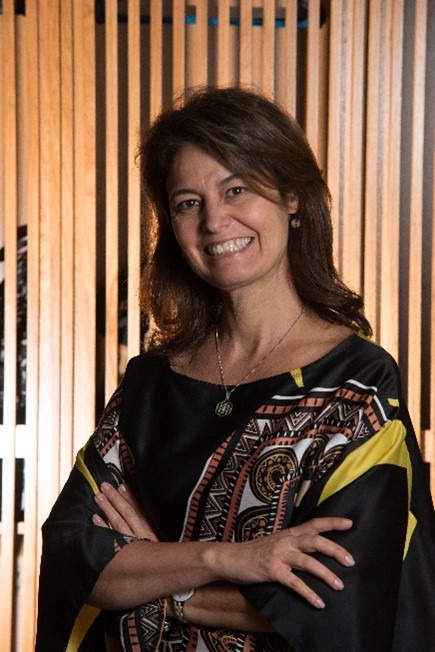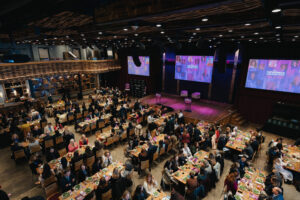Motorola’s comms leader shares virtual events tips
Can you still generate excitement and motivate stakeholders with virtual gatherings? Here’s one leader’s practical guidance.

For Motorola, the pandemic posed an acute problem: How can big events that used to generate excitement for new products be recreated without in-person gatherings?
The company had important products to promote, including the Motorola razr 5g, its latest phone primed for the growing consumer demand for devices that can handle 5G wireless connections. Luciana Vedovato, executive director of global communications at Motorola, says the team had to take a targeted approach with each market and product to hit the sweet spot for virtual events.

Luciana Vedovato
“While it was crucial to create virtual launch experiences that were just as immersive and unique as previous in-person product moments, we also realized nowadays, that less is more,” she says. “Throughout the year, we paid careful attention to not overwhelm our audiences with too many activations, options and details. Attention spans are short, so events must cater to that.”
Different products also required different approaches.
“For example, when launching the Motorola razr 5G, it was pivotal to create an immersive, fashion-forward event that truly showcased the product’s iconic, flippable design,” Vedovato says. “By including a movie theatre feature and high fashion event look and feel, the razr 5G story was fully brought to life.”
However, when it came to the launch of Motorola’s “edge” for Brazil, the use of futuristic technology helped create a vibe more in line with the cutting-edge technology on offer.
Understanding the audience
What can a virtual event audience stomach these days? We know that many are suffering from screen fatigue—not mention exhaustion from the nonstop news cycle and months of global crisis. That means that virtual events must be concise and targeted.
“Just as we customized each event to fit the product’s narrative, we also ensured each event catered to a specific audience,” says Vedovato. “Properly understanding and defining your audience is a critical first step to ensuring your virtual event is just as engaging as an in-person moment.”
Just how short can you make your event? As short as you can. “From the presentation and script down to the length of the launch and selecting the right speakers, each element was carefully thought out to make sure we effectively captured (and held!) the audience’s attention and communicated our key messages,” says Vedovato. “For example, with Europe being a critical market for 5G technology roll out, we specifically chose this region to hold the largest moto g 5G plus launch event. All event elements were customized and targeted for a European audience. “
It’s also a good idea to try and meet your target audience where they already are. For an important launch in the Philippines, that platform was Facebook. “Since Facebook is the predominant communicator in the Philippines,” says Vedovato, “the team decided to launch the Motorola razr 5G and moto g5 plus through Facebook Live events to drive and capture as much interest and exposure as possible. “
What to measure
For Motorola, the results of their efforts were clear. The virtual events created to engage media, third parties, and consumers helped grow share of voice (SOV) 56% higher than our average day of launch SOV. The hero video of the device, published on YouTube, performed above benchmarks across all key channel metrics, earning 12 times more views and 21 times more hours watched.
The owned media channel success was also mirrored by earned media wins. Following the event, the Motorola Edge family was featured in 65% more articles than on average globally one week after launch. And on social media, the brand added 1,000 followers in under two weeks following the launch event.
Build a template
One unique challenge for Motorola was the sheer number of events that the team had to reorganize. While other companies might have had a single event to transition to a virtual program, Motorola had 80 launches to revamp.
The team went on to build checklists and templates to help them replicate events, as opposed to reinventing the wheel for each individual event. Here’s a list of do’s and don’ts that Vedovato shared for others looking to craft virtual events in 2021:
Do’s
- Establish your event goals. Define the objectives, and align on your target audience early on. “Virtual events have the potential to reach a wide range of people,” Vedovato says. “Defining these pieces early on will help keep you focused and streamlined throughout the planning process. This will also help to understand which platforms, and internal and external support you will need.”
- Create an inclusive virtual experience with a clear marketing plan. “If your event is reaching people from different parts of the world, make sure the platform you select includes multiple languages and features for hearing or vision impaired attendees,” Vedovato says. “Defining a clear marketing plan that convinces your target audience this is a ‘must-attend’ among the many virtual events taking place is critical.”
- Conduct rehearsals and develop back-up plans. “Make sure to have a backup plan in case you hit any unexpected hurdles and always test the interactive features of your event.”
- Collect feedback from attendees and employees. “Compiling this feedback in a post-event report along with metrics and final budget will help to improve the next event experience by incorporating feedback from key stakeholders and helping to define goals and KPIs for future events,” Vedovato says. “A post-event survey email should also contain information on how the attendee can watch the event again, or download any post-event material.”
Vedovato also has some advice on common virtual event mistakes to avoid:
- Copying in-person events. “If you are bringing a typically in-person event to a virtual setting, reevaluate your goals and objectives,” Vedovato says. “Virtual events will likely need to have different event flows, formats, and goals and objectives than your in-person event.”
- Getting content wrong. “Attendees face more distractions than ever when they watch virtual events from home,” Vedovato says. She advises planning “less of the 40-minute PowerPoint presentations and more shorter panel discussions with plenty of breaks and lots of different opportunities for attendees to engage with.”
- Choosing the wrong speaker or host. “Choose the right speaker to engage the audience,” Vedovato says. “A speaker who delivers great content at a live event may not feel comfortable in a virtual event. Event managers should consider hiring hair/makeup and have a teleprompter for speakers, to make sure they are completely comfortable on video.”
- Not following up post-event. “Express gratitude to those who attended, get their feedback, and continue the story after the virtual event,” Vedovato says. “Use video recaps, emails, and social media to show people what they missed and continue the conversation.”







